(Click images to enlarge)
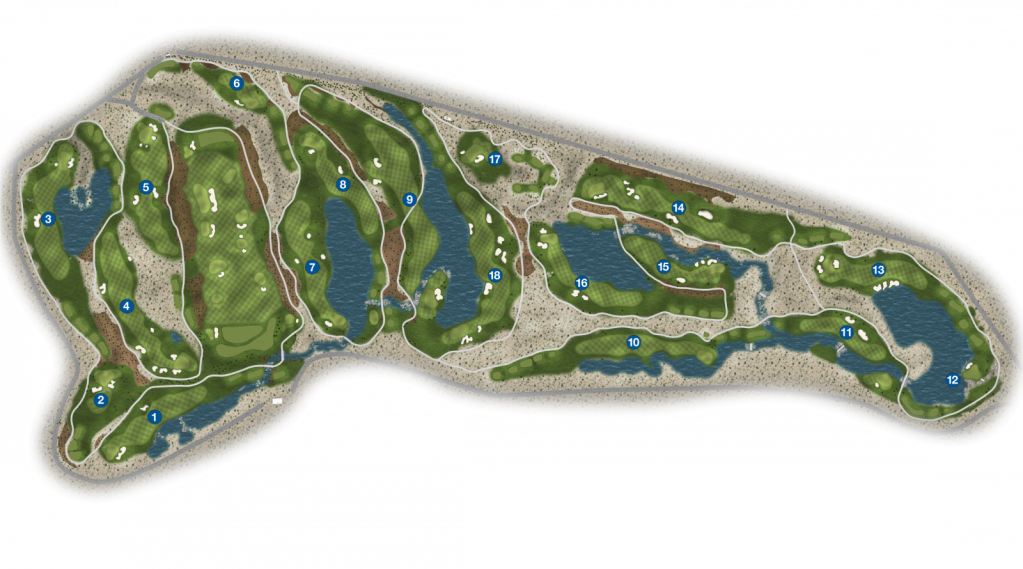

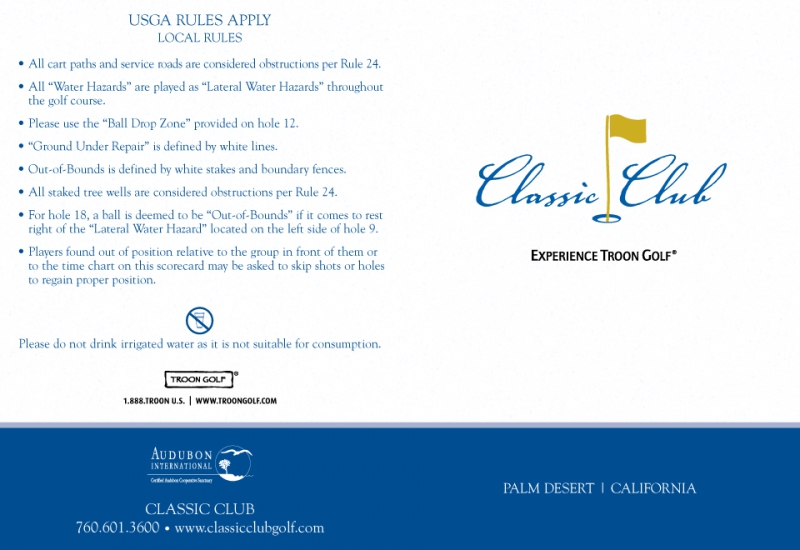
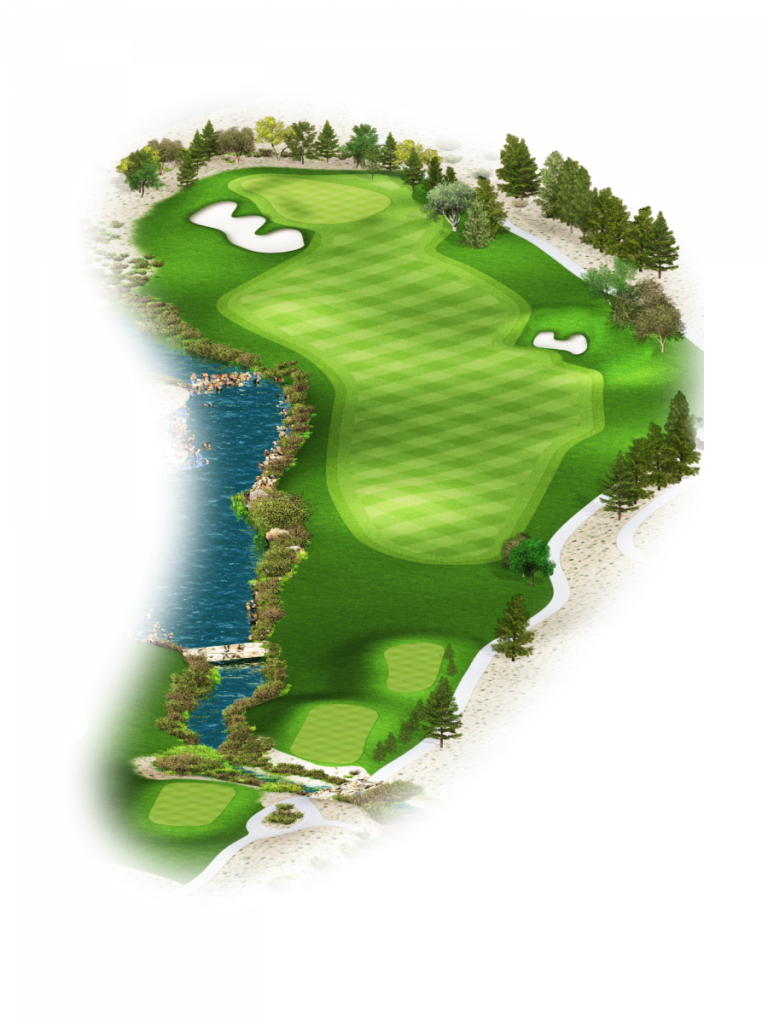
Black (408), Blue (358), White (346), Gold (316), Purple (305), Orange (252)
The opening hole at Classic Club is a relatively straight forward par four. The tee shot is faced with water bordering the left side of the hole, with the ideal tee shot slightly right of center, just short of the fairway bunker. This will leave a short iron approach into a green that slopes from back left to front right.
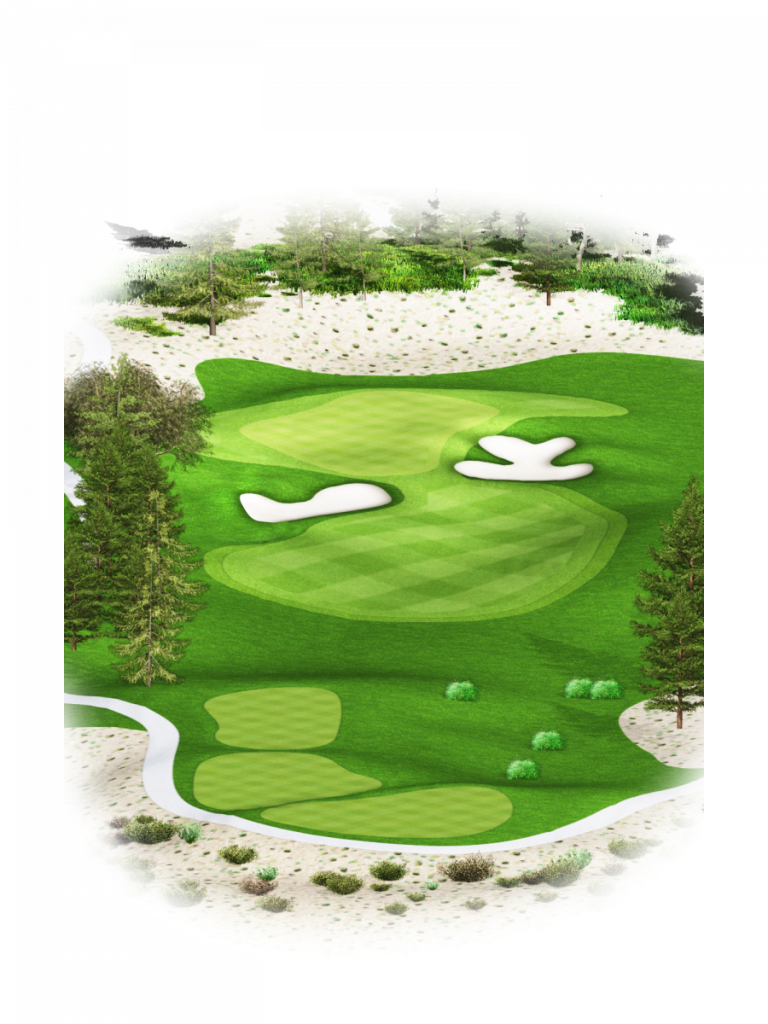
Black (180), Blue (173), White (160), Gold (152), Purple (126), Orange (44)
The first of the four par threes, the second hole lies in an amphitheater setting. It is important to control both distance and direction to the target, as deep bunkers are in play both left and right of the green.
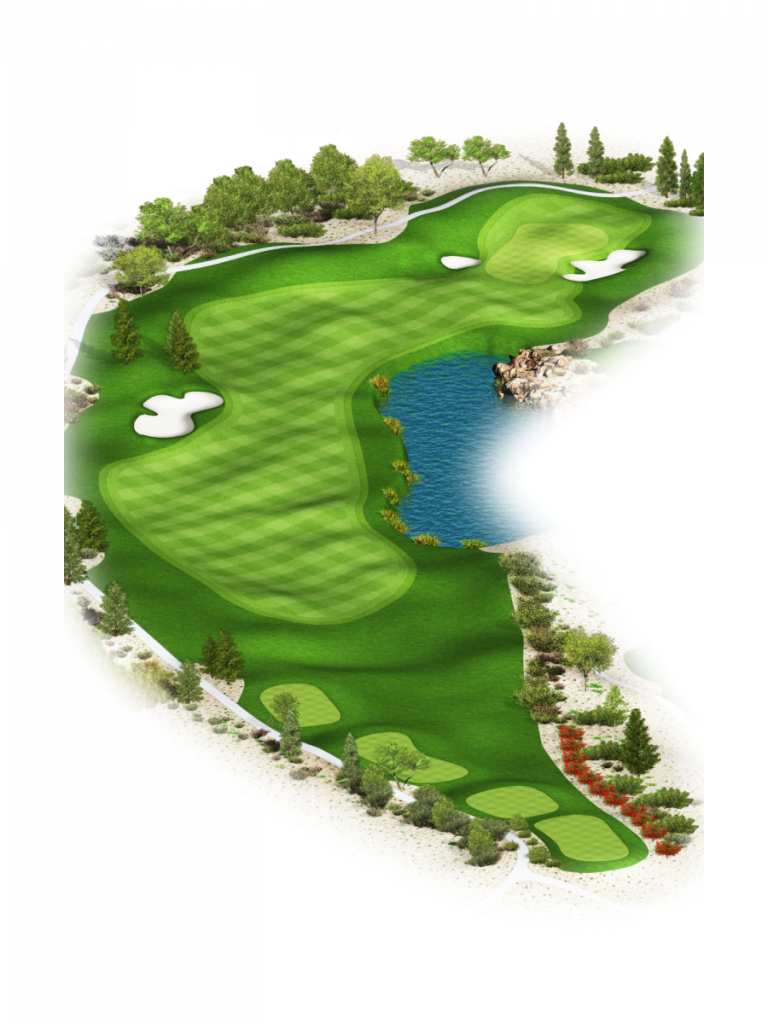
Black (443), Blue (408), White (377), Gold (365), Purple (334), Orange (269)
Playing directly towards the Little San Bernardino Mountains, the tee shot is hit from an elevated tee to a fairway guarded by water on the right and bunkers on the left. The ideal tee shot will want to be aimed left of fairway center, away from the water and the slope towards it. With an approach shot up hill to a two-tiered green guarded by bunkers both front right and front left, make sure to take an extra club to this back to front sloped green.
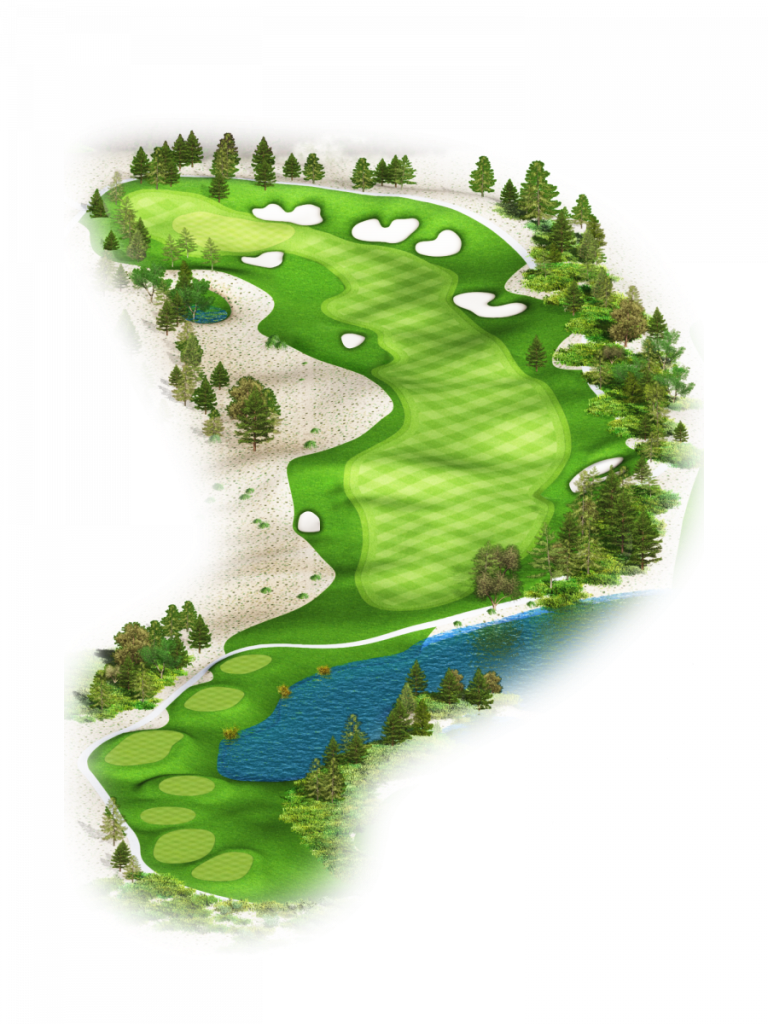
Black (568), Blue (525), White (477), Gold (432), Purple (404), Orange (347)
The first par five provides rolling terrain and numerous bunkers throughout the hole, as well as a long valley well below fairway-level to avoid. The longer player will be challenged to go for the green with their second shot, which is well protected by bunkers and undulation on and around the green. For most players, a lay-up to a protected landing area will leave a short approach shot.
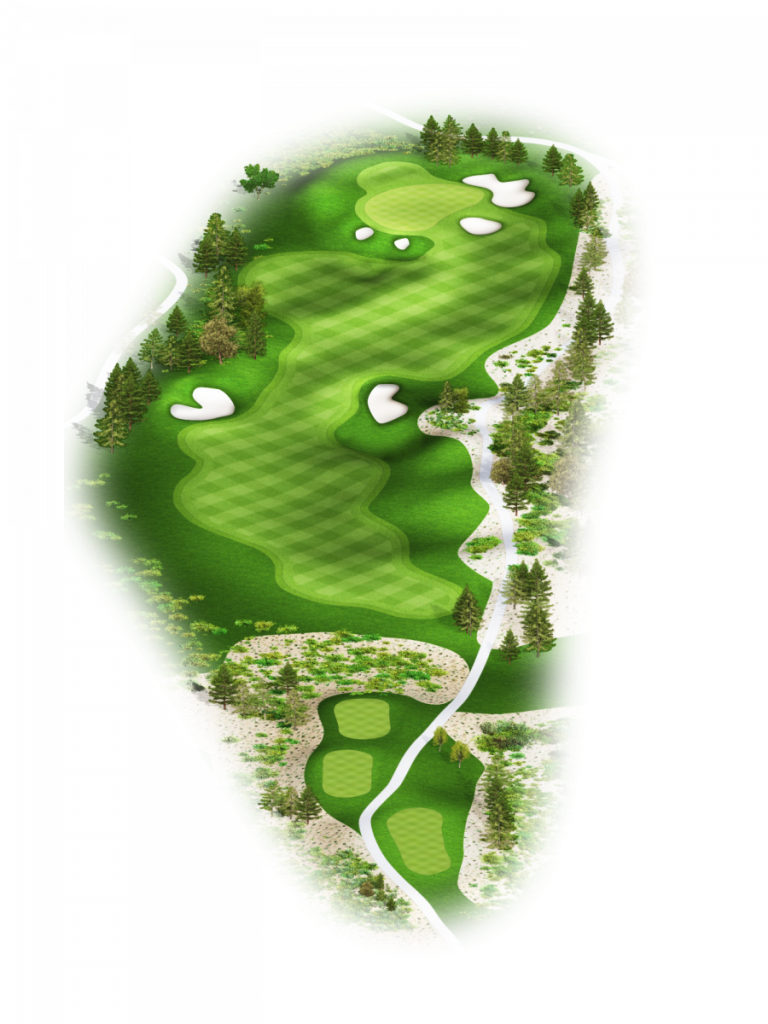
Black (419), Blue (402), White (366), Gold (331), Purple (325), Orange (256)
The ideal tee shot on this left to right dogleg will be located just short of the left fairway bunker. This will leave the players with a mid-ranged approach shot to a slightly elevated green surrounded by two deep front bunkers and a large bunker at the back, capturing approach shots hit long.
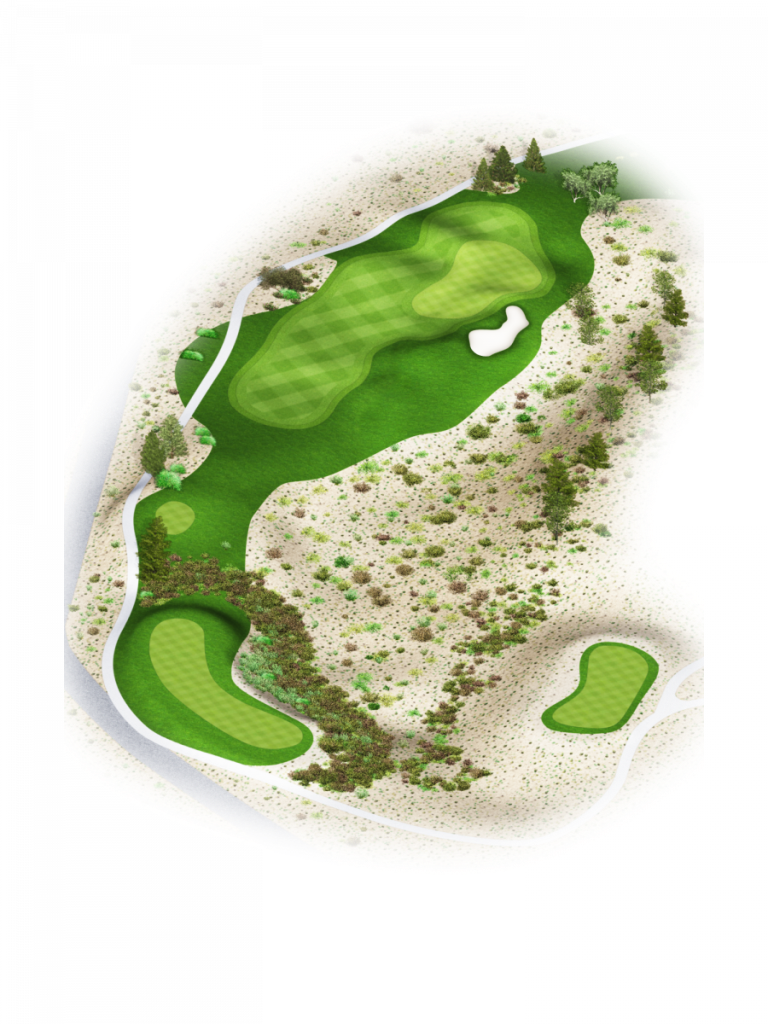
Black (220), Blue (208), White (193), Gold (183), Purple (136), Orange (66)
The longest of all par threes on course, the tee shot will need to carry both a large ravine the runs the entire length of the hole, as well as bunkers that protect the front of the green. Middle of the green is an excellent shot to a long and narrow green that runs from back to front.
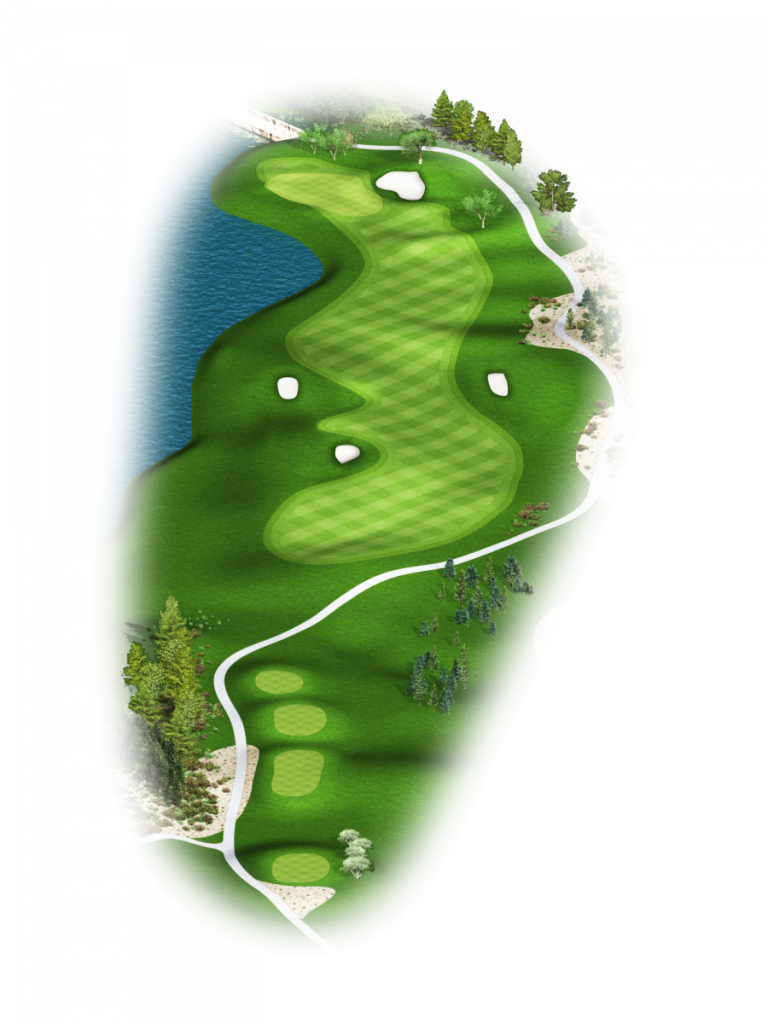
Black (477), Blue (414), White (405), Gold (375), Purple (351), Orange (253)
The most demanding tee shot on the front nine that will require both distance and accuracy. A well struck and accurate tee shot will be hit down the right half of the fairway, between the bunkers that guard each fairway edge. The approach shot will be a mid to long iron and will need to be precise, as this green is protected by water short and left. A par here will be an extremely good score.
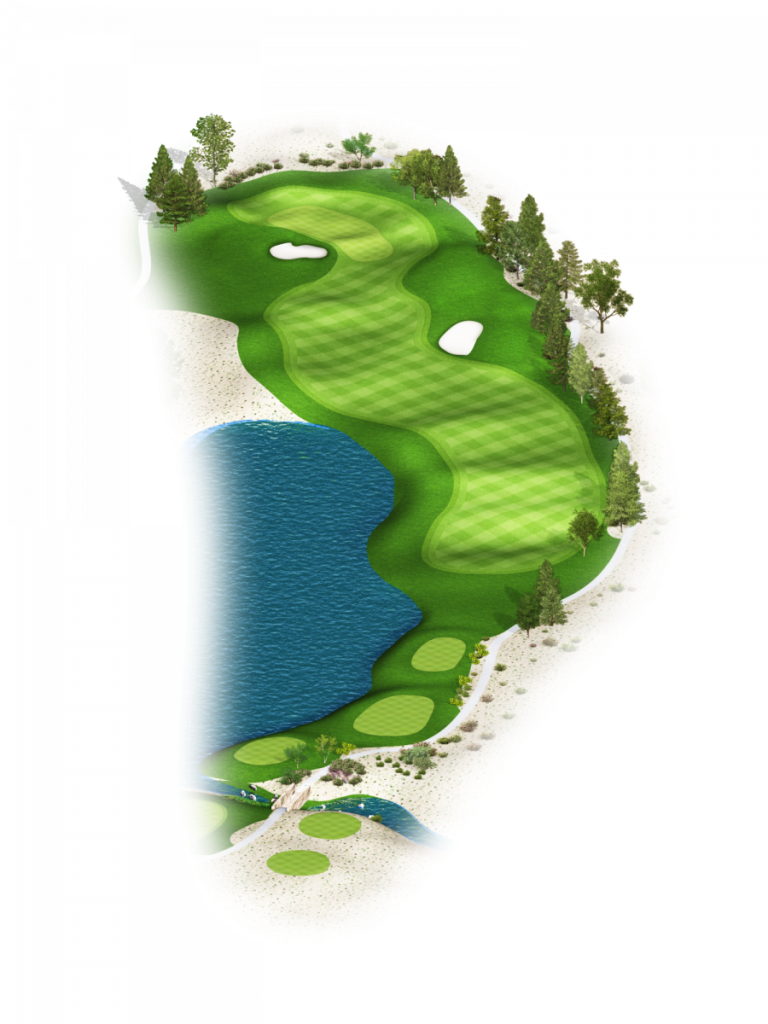
Black (433), Blue (413), White (357), Gold (329), Purple (288), Orange (240)
Players will be challenged off the tee by a large lake that will require a choice: take a direct line over the largest part of the water, which will leave a short approach, or aim to the larger, right fairway landing area. The second shot on this hole is to an elevated green that is guarded by bunker on the left and two tiers sloping back to front.
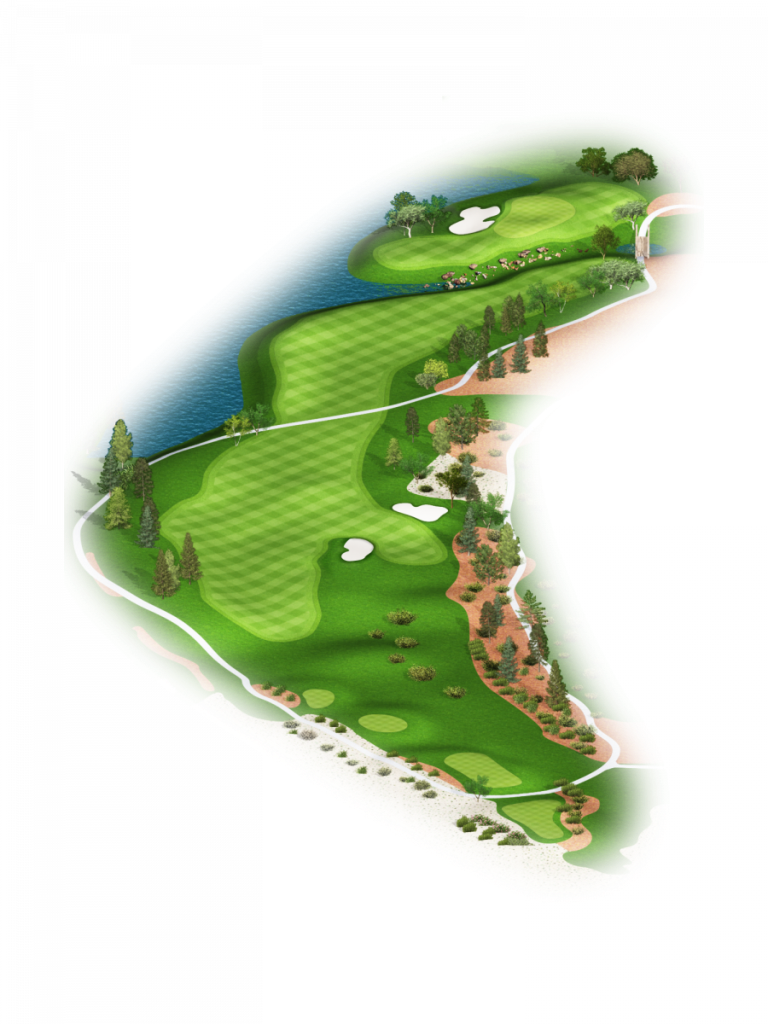
Black (595), Blue (540), White (529), Gold (485), Purple (457), Orange (418)
The front nine finishing hole is the longest of the par fives as players will experience a significant elevation drop from the elevated tees to the green. The tee shot is guarded by two fairway bunkers on the right side of the fairway; longer hitters who carry the bunkers may be rewarded with extra roll from the downward sloping fairway. The approach to the green requires a shot across a stream that protects both the front and right of the green.
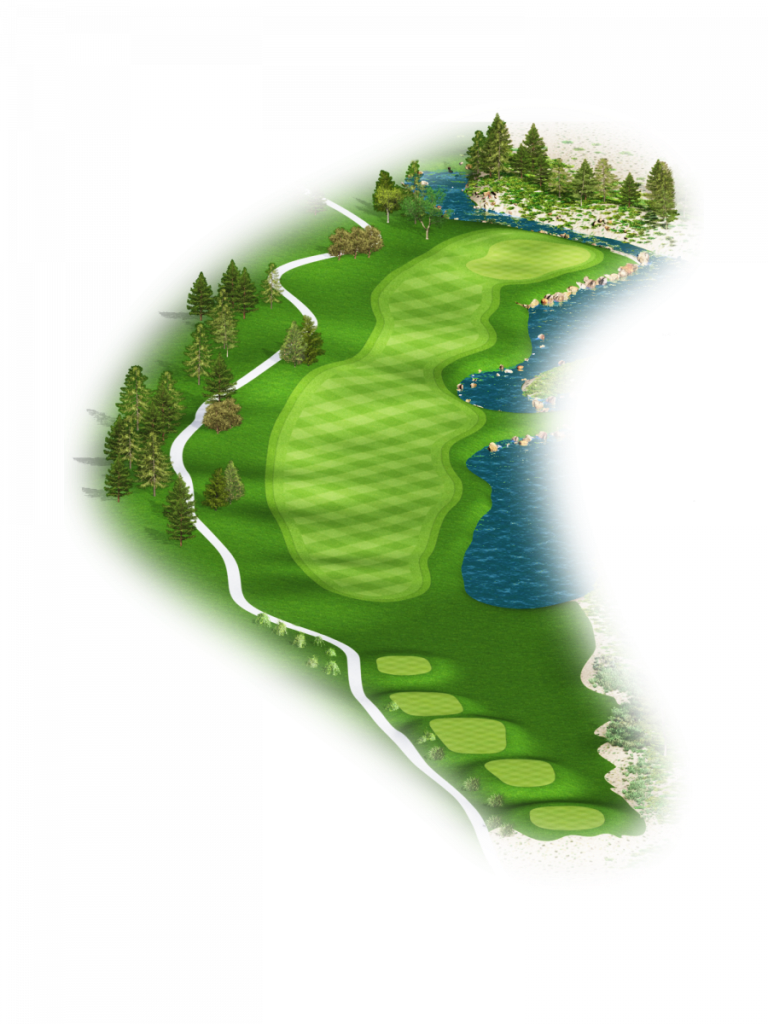
Black (474), Blue (432), White (407), Gold (375), Purple (344), Orange (300)
The back nine starts out with a demanding tee shot to a fairway that fades slightly to the right with water guarding the entire right side of this hole. The players will want to be in the left center of the fairway hitting into this green which is guarded by water on the right.
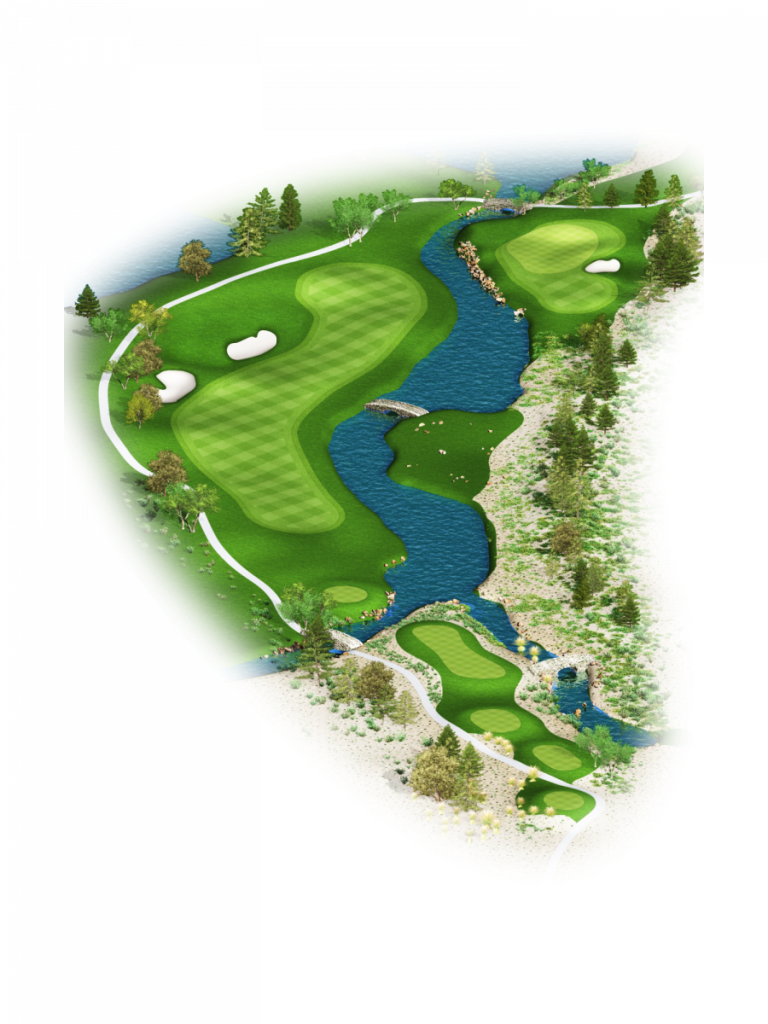
Black (459), Blue (394), White (351), Gold (338), Purple (296), Orange (266)
With water present from tee to green, this dogleg right par requires an accurate tee ball to a fairway guarded by bunkers left and water right. The middle of the fairway is the best position for a demanding mid-iron approach shot back over water with a bunker right of the green.
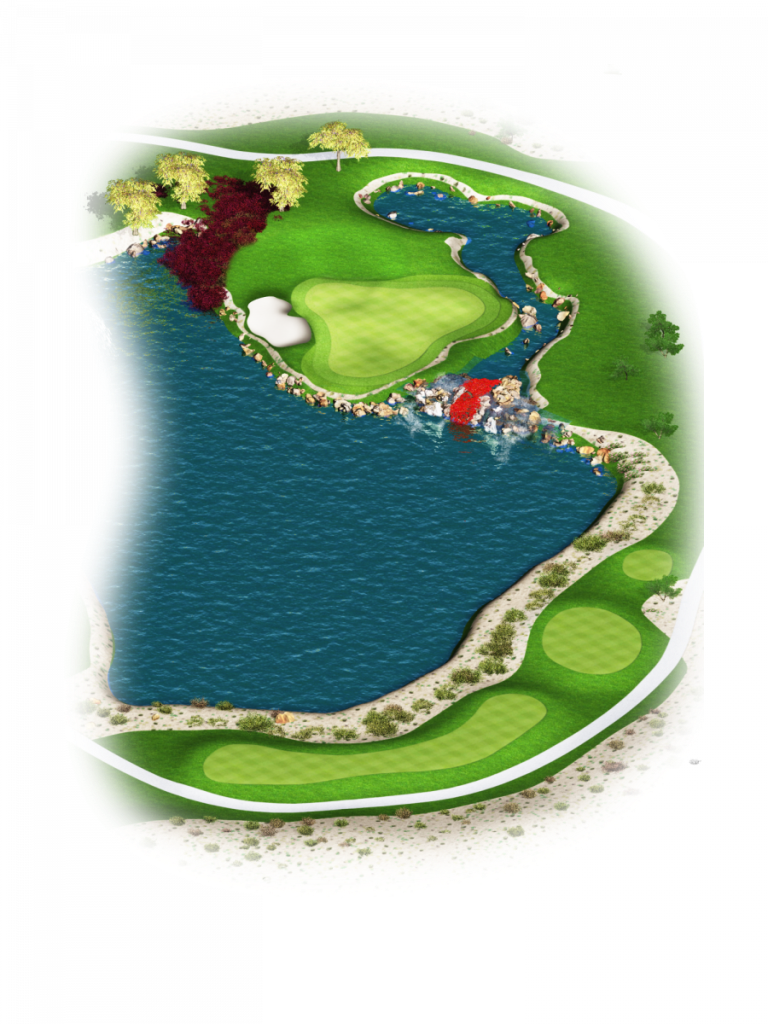
Black (162), Blue (160), White (142), Gold (118), Purple (93), Orange (68)
The shortest hole on the course is a spectacular par three. This hole presents beauty and hazards for the players from every teeing area. Accuracy will be at a premium from the tee as a large lake and waterfall surrounds nearly every edge of this green.
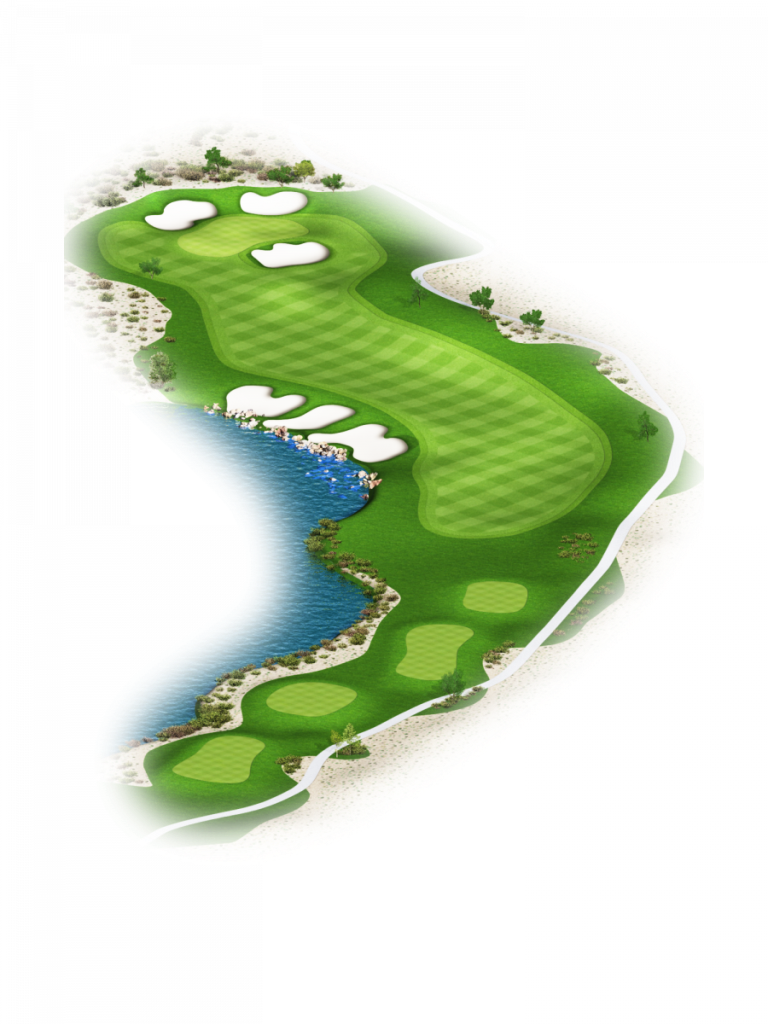
Black (399), Blue (351), White (309), Gold (299), Purple (270), Orange (232)
A slight dogleg left from tee to green that will provide players an opportunity to challenge the lake to the left and three deep-faced fairway bunkers. From the fairway, players will have a relatively short approach to the smallest green on the course, which is protected in front and behind by bunkers and slopes severely left to right.
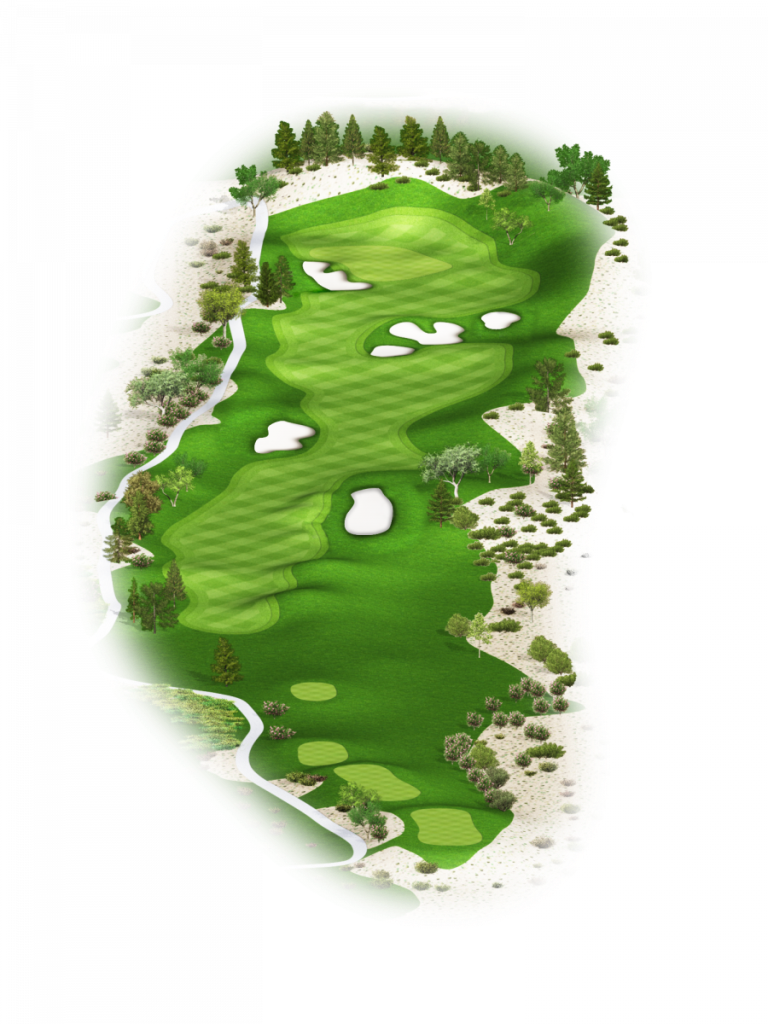
Black (560), Blue (511), White (501), Gold (475), Purple (419), Orange (355)
Another longer par five that plays slightly downhill the length of the hole and moves ever so gently from left to right. A good tee shot to the right center of the fairway will give some players the opportunity to reach this green in two, but will be forced to carry their second shot over a crossing of three bunkers cutting off much of the fairway. For those laying up short of the fairway bunkers, the approach will face a green sloping from back left to front right that is guarded by a larger bunker left of the green.
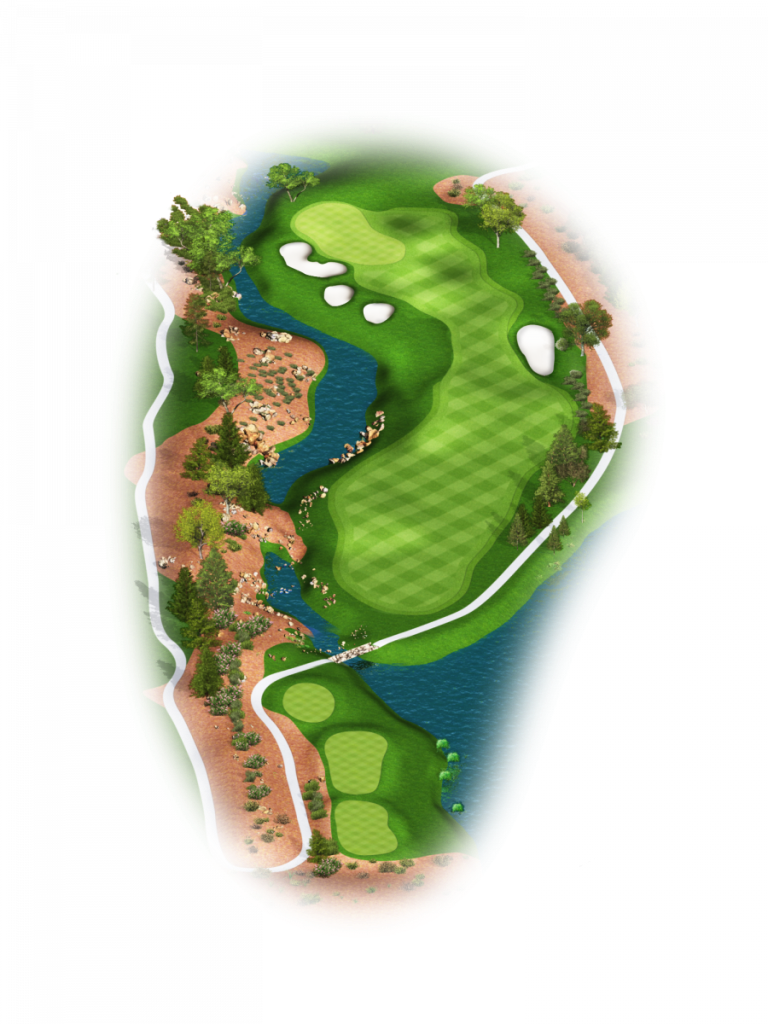
Black (349), Blue (337), White (310), Gold (300), Purple (273), Orange (203)
The shortest par four on the course will add excitement, as well as challenge, for all players and will invite the bravest of players a gamble at driving the green. The risk is water, expansive bunkers and fairway slopes. For the more cautious players, a hybrid or fairway wood is all that is needed, leaving a short approach shot to the green.
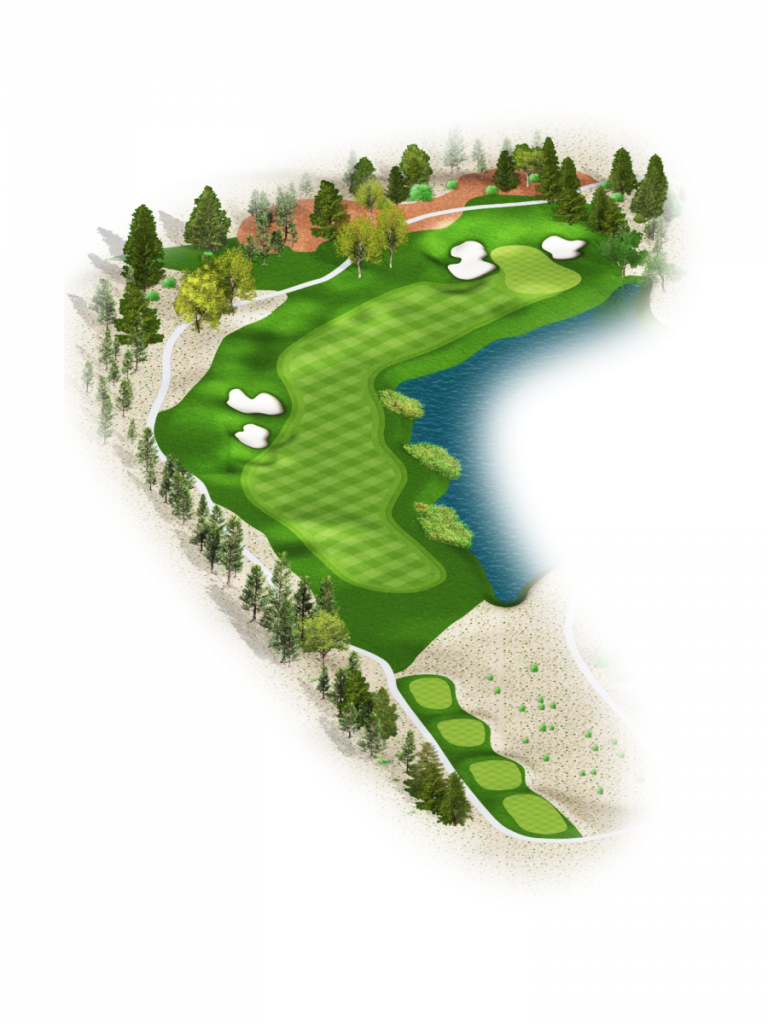
Black (436), Blue (398), White (365), Gold (340), Purple (330), Orange (249)
Aptly named, this par four has many similar characteristics to number three: is a slight dogleg left to right, water guarding the right side and bunkers at the left edge of the fairway. The second shot plays to a green that is slopes from back left to front right and is guarded by a large bunker front left of the green.
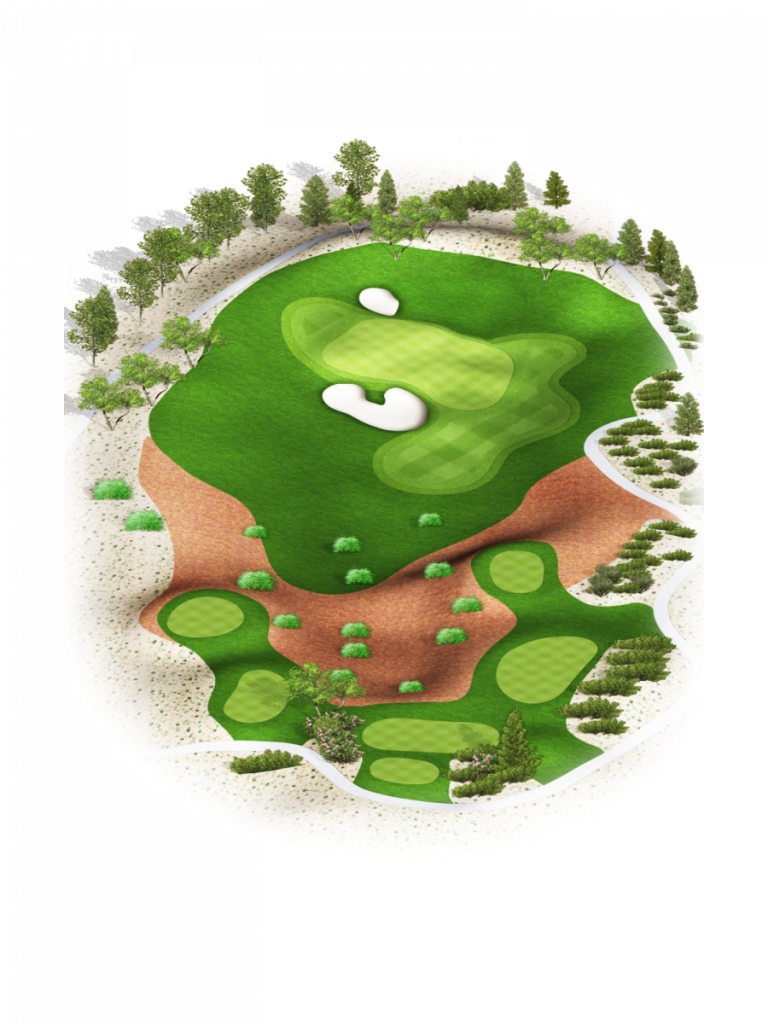
Black (176), Blue (161), White (151), Gold (130), Purple (112), Orange (58)
A dramatic, downhill par three with a large, deep bunker that fronts the green and another bunker behind. Judging club selection will be key as the green has the most undulation of any green on the course that can be utilized to the player’s advantage.
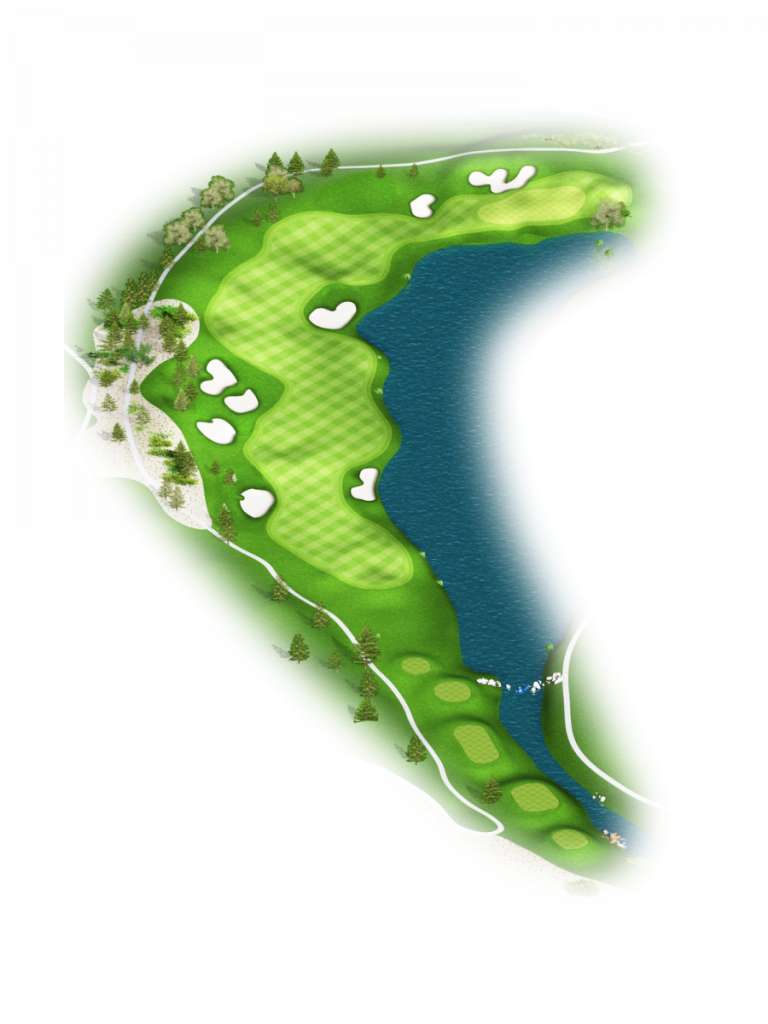
Black (564), Blue (526), White (483), Gold (439), Purple (416), Orange (343)
The finishing hole is a natural theatre for the conclusion of the round. A downhill par five challenges players the risk of bunkers off the tee on both sides of the fairway. Water lines the entire right side of the hole and will come into play with any shot that comes up short of the green. An approach into the green from the left fairway will present a clear angle into a large green.

